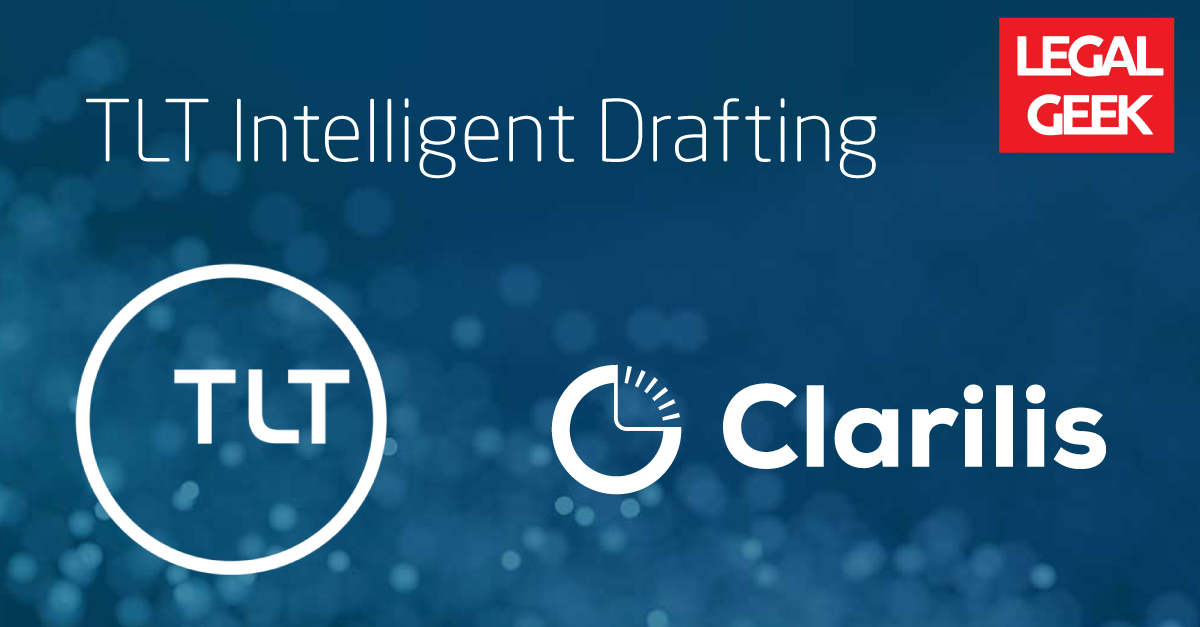Creating hybrid ‘law firm - legal technology’ partnerships will help over-stretched in-house lawyers to navigate the bamboozling array of digital tools now on offer. This was the headline message of a joint presentation by Clarilis’ James Quinn and TLT partner, Siân Ashton, for the virtual Legal Geek Conference last week. But why exactly do they believe collaboration is so important to the future of law?
Two perspectives. One common goal.
Siân's focus is on client service and transforming the way the firm delivers legal services to its clients. As a result, she’s well aware of the challenges general counsels face when navigating today’s crowded LegalTech market.
James is Clarilis’ CEO. He’s an ex-lawyer who has crossed over into the world of LegalTech. He now wants to blur the boundary between law firms and tech suppliers to facilitate better use of technology across the industry.
They both agree that bringing together client insight and technology know-how could have a hugely beneficial influence on shaping the future of law. For the Legal Geek Conference, Siân and James joined forces to share how TLT and Clarilis are working together to pursue this vision.
Collaboration = more clarity, less confusion
In-house legal teams today are bombarded with digital tools that promise various productivity gains. But how does the average tech-ambivalent legal counsel know which one will work for them?
“The LegalTech market is crowded and difficult for general counsel to navigate – it’s a very noisy space,” James explained. “It ends up with some teams trying to solve all their problems at once and not making any headway. Others are overwhelmed by the choice in the marketplace and do nothing. But many are turning to their legal advisors to help them choose the best technology.”
As well as vouching for the reputation and credibility of solutions, law firms also have to advocate solutions that offer a good cultural fit for their clients. And this is why firms such as TLT are choosing to work closely with handpicked legal technology providers like us.
“The days of just signposting clients to technology and saying – ‘these guys will take care of you’ – are gone,” James added. “It’s a much more holistic approach now. Law firms and legal technology providers need to work together to solve problems and deliver solutions.”
Where should you start when evaluating LegalTech?
It has to begin with understanding what the issue actually is for the client. And this is where insight from an organisation’s legal advisors can really help. Getting to grips with the problem is part of the human-centred approach championed by Siân and the FutureLaw team.
“It’s easy for law firms to assume they know what the problem is and what the client needs,” Siân explained. “We pride ourselves on talking to our clients and really getting to understand their pain points. We have to understand what their real issues are and how we can help clients realise greater value for their business.”
By bringing this client insight into a collaborative space between our firms, together we get to the crux of the problem quicker. Sometimes this means that technology is not the solution and that all the client really needs is a well drafted precedent. But when the needs are more complex, we deliver significant transformations with carefully designed intelligent drafting solutions.
Helping clients realise value
The best way law firms can truly evaluate the difference technology makes is by using it themselves. Siân explained the emphasis TLT place on having practical experience of using the technology internally and understanding the value and benefit it brings to their lawyers as demonstrated by their use of the Clarilis platform for drafting. This means when recommending it to clients, they can refer to real-life experience, rather than relying on hypothetical use scenarios.
As an example of this approach, a FTSE 250 plc client approached TLT for help preparing for a change in employment legislation that stipulated that they had to draft and deliver employment contracts to new employees within 24 hours. With a large and fluctuating workforce, the client’s small HR team would clearly be overwhelmed by this drastically shortened timeframe.
It was clear, it would take more than a template to allow them to churn out thousands of contracts per year at this speed. Fortunately, TLT was able to promptly introduce and work with Clarilis as a trusted, intelligent drafting solution. We worked together to apply our automation technology to significantly speed up the production of employment contracts. New employee information is now simply added to the system and this automatically populates legal documents. As a result, the HR team can keep up with their requirements by delivering faster turnaround times. Watch James and Siân's Legal Geek presentation here.
Starting new conversations about LegalTech
At Clarilis, we talk at events like the Legal Geek Conference because we want to encourage more open dialogue about the role of technology in delivering legal services. But it’s important we talk to law firms and in-house teams directly too. We would love to hear your perspective and to explore how we could collaborate with you. Let’s start that conversation.



